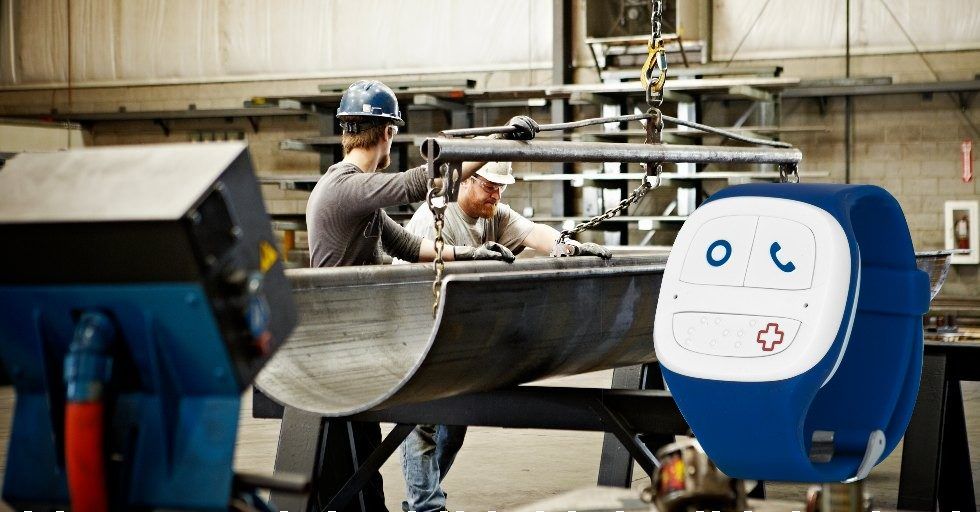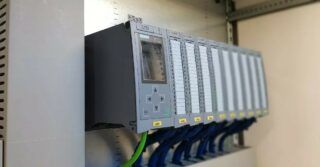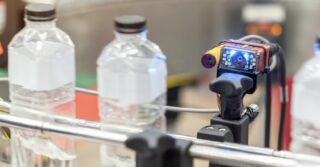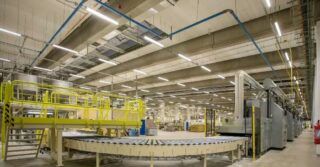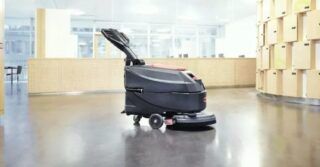The Industrial Internet of Things is slowly becoming part of the reality of manufacturing companies. More and more of them decide to use sensors, meters and analytics of the data collected in this way in order to improve production, increase efficiency and avoid downtime resulting from failure or lack of components / semi-finished products.
→ Will the ‘wearables’ technology, based on IoT, also permanently fit into the image of production plants and logistics companies?
→ What are the benefits of using this type of device?
→ Will they be used to increase work safety or maybe they will contribute to an increase in employee productivity?
→ One thing is certain – smartwatches are becoming more and more popular among athletes and physically active people. Will they also be widely used in production plants?
The term `wearables` covers many different battery-powered devices with their own software and the ability to communicate within the IoT. This type of device can be used to monitor the activity of employees, especially exposed to dangerous conditions while performing their official duties.
In the article, we will briefly show examples of applications and present one of the devices that Comarch, a software manufacturer, is launching on the Polish market.
What can this type of device be used for?
- to detect falls and to notify the management about the occurrence of a situation of threat to the health or life of the employee
- sending security alerts and text messages to employees in an emergency
- providing the necessary information in situations where a mobile phone or computer communication is not possible
- monitoring of employee movements, which enables the redesign and optimization of processes in order to improve work efficiency
At present, wearables are primarily designed to improve safety and performance in workplaces. They can be successfully used in production and logistics companies. They collect real-time data, monitor user activities, and send alerts to and from the user. They can be designed to assist the worker in carrying out specific tasks or to measure activity parameters when working in hazardous conditions.
According to the preliminary data published by the Central Statistical Office in Poland (GUS), the number of accidents at work and the number of fatal accidents will decrease for the first quarter of 2020. The good news is that the accident rate is falling, but which industries are currently recording the highest rate? For years, mining and quarrying, water supply (sewage and waste management, reclamation), health care, industrial processing, transport and logistics, and construction have been on the podium.
Unfortunately, when it comes to the statistics of fatal accidents, the worst results are transport and storage (as many as 8 fatal accidents in Q1 2020), construction (7) and industrial processing (6).
The most common activity at the time of an accident is moving (36%), handling objects (18%), manual transport (15%), driving / driving means of transport / operating moving machines and other devices (12%) and operating machinery (9, 5%).
This is where the ‘wearables’ technology comes in handy, and more specifically the Comarch WristBand solution dedicated to the industrial sector. It is a remote system for monitoring the activity of employees of large industrial plants, production and logistic halls, increasing their safety by definition.
The monitoring device developed by Comarch is intended primarily for heavy industry, steel mills, factories, large enterprises with huge expanses of warehouses and strictly manufacturing companies operating above the ground
Comarch WristBand, as this service is called, works well as a monitoring system for employees who work alone, in separate workstations, often in dangerous conditions. The use of this service in sectors such as energy production (wind farms), the mining industry (especially opencast mines), transport and logistics (for example large-scale warehouses) or shipbuilding industry can be quickly mentioned.
The question arises as to what about the mining industry, in which, according to the statistics of the Central Statistical Office, the accident rate is actually the highest? Well, devices of this type can be used underground, but in this case, points are required that amplify the signal, which requires the construction of a 2G infrastructure.
Thanks to the monitoring device in the form of a bracelet or key ring, the employer has constant contact with the employee. The intention of the employee care service is to make the employee’s safety a priority and to raise it to the highest possible level, hence one of the possibilities of such a device is to call for help in an emergency – by pressing the SOS button and making a voice call.
Comarch WristBand communicates over the 2G network, using Internet data transfer and by phone. If there is cellular network coverage in a given place, the device will also work without installing an additional signal station. In the default configuration, the WristBand saves the employee’s location every 15 minutes using the following systems: GPS, GSM, Bluetooth, WiFi (it is possible to set more frequent updates), creating a map of points in time. By adding a beacon, we can use the device to improve work efficiency. The device developed by Comarch has a sensor that detects a fall and subsequent immobility. In such a situation, WristBand sends a signal to the dedicated e-Care Platform, which collects data from the device, enabling constant and remote access to the received data (such as e.g. employee’s location, number of steps taken) and their subsequent analysis, which may be particularly justified. in the construction industry. An interesting functionality is also the possibility of telephone communication with construction workers.
When can this type of device come in handy?
- when we do not have the possibility of constant and direct contact with employees who perform their duties independently, mainly in the case of enterprises located in a large area, including: production halls and warehouses as well as storage yards
- when we are not able to immediately and independently call for help in a life-threatening situation
- when we do not have information on the activity of monitored persons
- when we cannot locate people in need of emergency
All data collected from the device is sent to the e-Care Platform, which additionally:
- enables constant, remote monitoring of the health of employees, regardless of where they are
- it is available from any computer with a web browser
- enables easy and convenient access to data such as location, number of steps taken or the employee’s illustrative heart rate
As forecasted by Goldstein Research analysts, the global smart bracelet market will reach $ 168 million by 2025, with a CAGR (Compound Annual Growth Rate) of 15.7% over the forecast period.
According to Forrester Research, in 2020-2025, wearables will be widely used in enterprises. The first step may be a Comarch WristBand device. It is likely to be quickly adopted in industry, provided that employers make every effort to avoid the impression that they infringe the privacy of employees.
Comarch expert’s statement – Marcin Okarmus said, Head of the R&D department in the Comarch IoT sector
What was the genesis / idea of creating this type of product?
Comarch has been developing IoT solutions for years, also in the area of Telemedicine, and more specifically remote care and monitoring of patients / charges. We have our own medical cloud, thanks to which we can provide remote care services. The development of a WristBand device was a natural idea for the development of this ecosystem. At the moment, the number of monitored people is in the thousands, it is both professional (with the use of paramedics) and “home” monitoring, where family members take care of their relatives remotely. The natural direction of development for the developed device is the use of the same technologies in industry, in order to, inter alia, increasing the safety of employees.
Are you planning to develop this product? If so, in what direction?
Of course, we have extensive development plans, and this applies to the devices themselves – we will increase their diversity. The elderly, children, and employees of, for example, warehouses, have different needs. We are working on increasing flexibility in the area of wireless connectivity in order to be able to meet the requirements of specific customers more precisely. We also develop business areas in which our solution finds new applications. An undoubted advantage of Comarch is the huge customer base for whom we have been providing IT solutions for the last 27 years, which we can now expand with the possibilities offered by IoT.
Have you conducted tests in production plants / logistics companies?
Yes, we have our first experience with production companies, including logistics companies – mainly in the area of “Asset Tracking“. Of course, wearables of the consumer or even medical class will not be used in every industry, in particular, I mean work in potentially explosive areas – e.g. the oil industry, mining – where devices that meet specific intrinsic safety standards are required, but even in such cases, it is possible to use dedicated solutions. In addition, we test and implement all our solutions in our own Research and Development Laboratory – IoT Plant.


